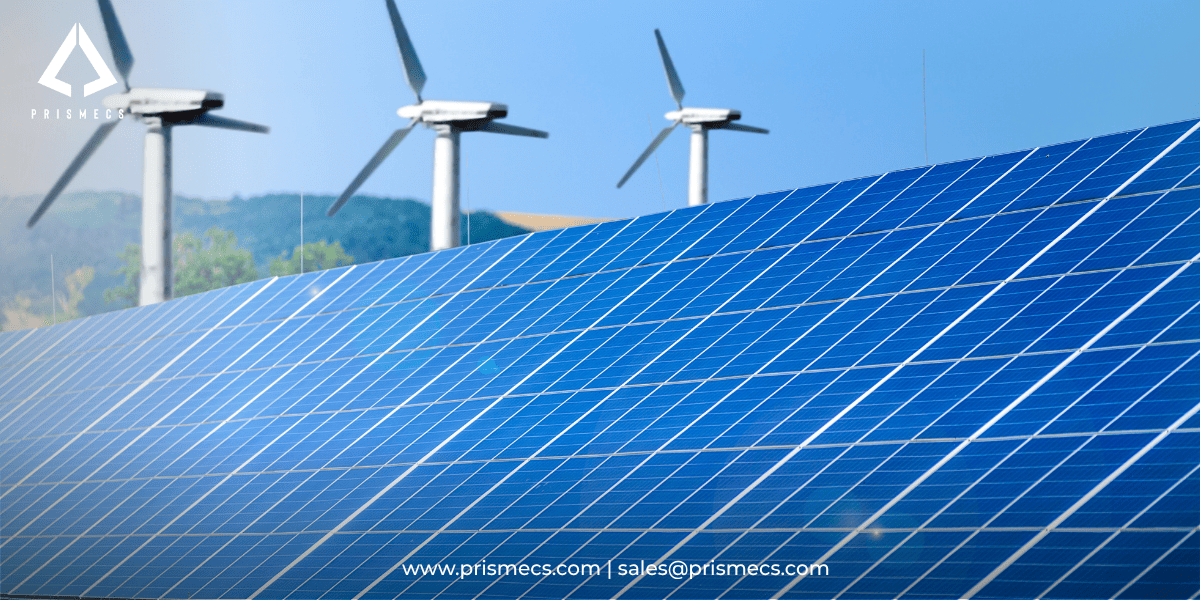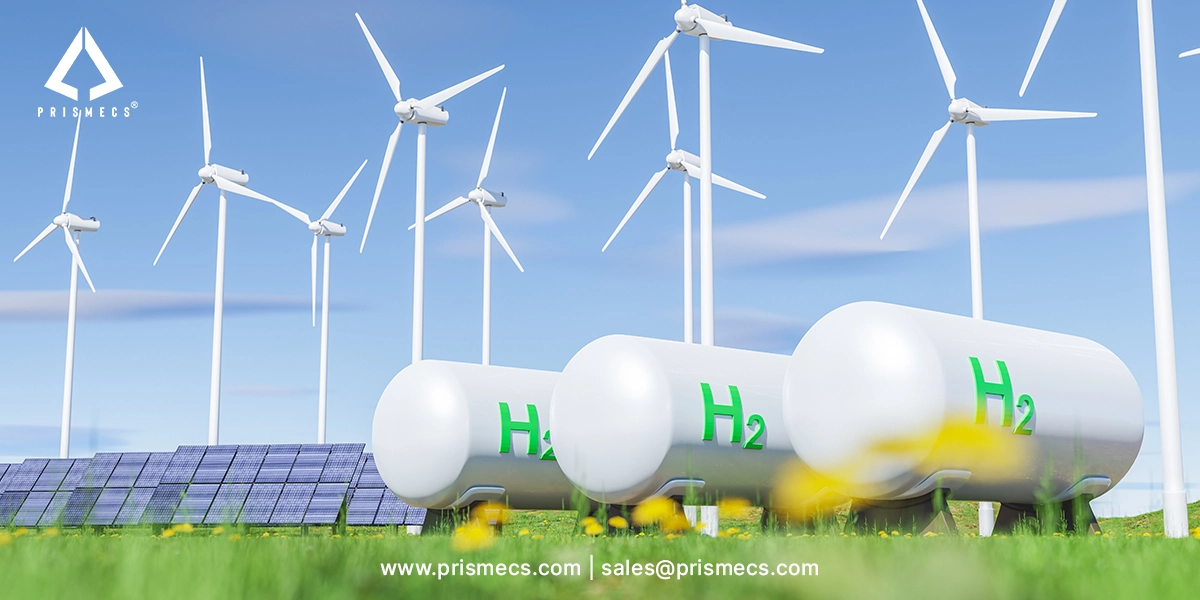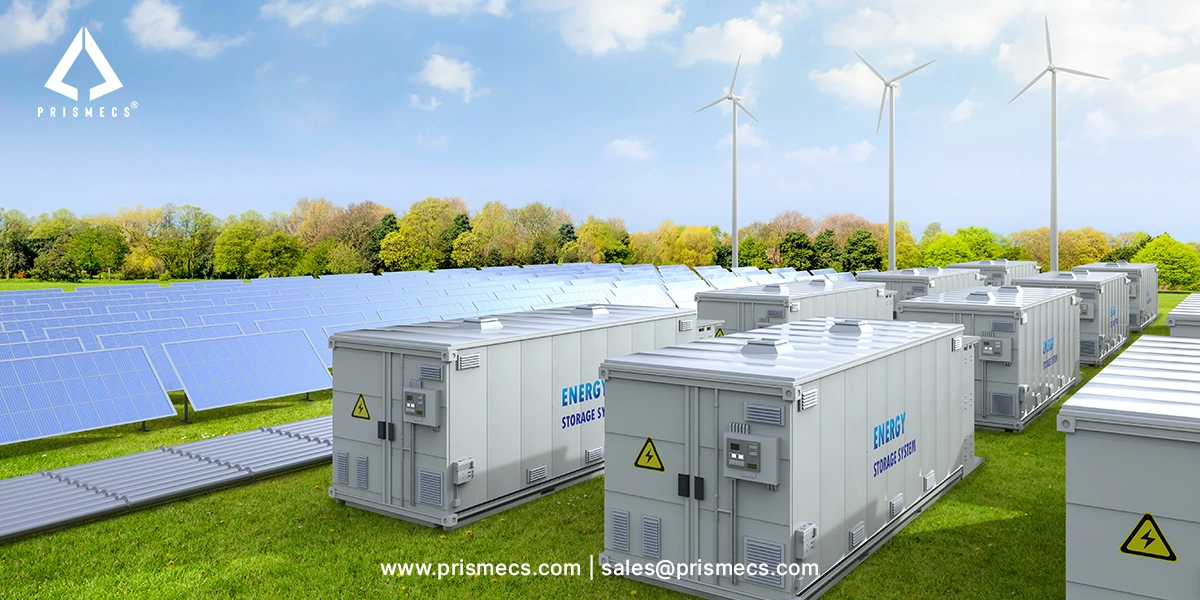
In today's world, the conversation around renewable energy sources is louder than ever. Nations, industries, and communities worldwide are embracing cleaner, sustainable energy to reduce emissions and ensure energy independence.
Power demand is increasing, and concerns about climate change are growing, driving a shift toward renewable energy sources. This global movement represents more than a trend; it defines the future of electricity generation. Let's examine the global trends driving renewable energy growth and their impact on tomorrow's energy system.
The Rise of Renewable Energy Sources in the Global Energy Landscape
Renewable energy sources are now at the center of modern power generation strategies. From massive wind turbines dotting coastlines, clean power continues to break records every single year. Large-scale solar farms in sunny deserts also contribute significantly to the growing success of clean energy worldwide.
Fossil fuels emit large quantities of greenhouse gases, which can harm the environment in the long run. Renewable energy uses sunlight, wind, water flow, and underground heat that constantly replenish themselves. These types of energy help lower non-renewable energy use across global sectors. They also play a crucial role in the worldwide shift toward cleaner energy sources.
Key Global Trends Shaping Renewable Energy Growth
Below are some of the key global trends shaping the growth of renewable energy.
Massive Investment in Wind and Solar Power
Wind and solar photovoltaics dominate new energy projects globally. According to the EIA and IEA, solar energy is expected to meet nearly half of the projected growth in electricity demand. Analysts expect this growth to continue through 2025. Similarly, wind power is expanding rapidly, especially offshore wind farms in Europe, China, and the United States.
As modeled, experts expect wind and solar energy to provide 60% to 80% of the generation by 2035. The least-cost electricity system will rely heavily on wind and solar energy. Experts expect the overall power system generation capacity to grow to three times the 2020 level by 2035. This growth includes a combined 2 terawatts of wind and solar energy. The Biden administration plans to deploy 30 gigawatts of offshore wind by 2030. This goal underscores the growing significance of wind energy in the country's renewable energy strategy.
Decline of Fossil Fuels in Electricity Generation
As renewable energy sources become more cost-effective and accessible, the dominance of fossil fuels is gradually fading. Coal-fired power plants are closing down at record rates in Favour of cleaner alternatives. Even natural gas, once viewed as a transitional source, now faces growing scrutiny. Methane-based fuels raise concerns because of CO2 emissions and supply instability.
Nations with net-zero goals shift their energy mix by removing carbon-intensive sources. They adopt clean energy technologies such as nuclear energy and heat pump systems. This trend contributes significantly to reducing the environmental impact of the global energy sector.
Integration of Renewable Energy into Power Grids
One of the most transformative global trends is the integration of renewable energy sources into the traditional electrical grid. Utilities are modernizing grid infrastructure to accommodate the variable nature of wind and solar power.
Innovations such as smart grids ensure stable and reliable power. Real-time energy management also supports stability. Advanced storage systems deliver power when the sun isn't shining. They also work when the wind isn't blowing. This integration improves grid resilience and enables more flexible electricity system strategies.
Energy Storage as a Catalyst for Renewable Growth
With the rise of intermittent renewable energy sources, energy storage solutions are becoming essential. Lithium-ion batteries, heat energy storage, and hydrogen storage store excess energy during peak production. These technologies release stored energy during times of high demand. Storage enhances grid stability and unlocks the potential of renewable energy technology to deliver consistent power. Countries like Australia, Germany, and the U.S. invest heavily in large-scale battery installations. They support their energy transitions and produce electricity more reliably.
Global Climate Goals
Supportive policies are accelerating the adoption of renewable energy sources worldwide. Governments, including the Department of Energy, offer tax credits and subsidies for clean energy. They also implement renewable energy mandates and emissions regulations to support the transition to renewable energy. These actions encourage both private and public investment in clean energy development.
International agreements such as the Paris Agreement continue to push countries toward more ambitious climate goals. These frameworks encourage global collaboration and set benchmarks for renewable capacity expansion, driving innovation across all types of renewable energy. The US$8.3 billion Empowering Rural America program may deploy over 36 GW of renewables. The US$4.3 billion Climate Pollution Reduction Grants may also help deploy over 36 GW of storage. These programs may support clean energy alternatives, including nuclear power plants, across all 50 states by 2030.
Emerging Economies Driving Clean Energy Expansion
While developed nations lead large-scale renewable installations, emerging economies are catching up fast. Countries in Africa, Asia, and Latin America view renewable energy as a solution for energy access. They also aim to reduce energy costs by utilizing renewable sources. These countries expect renewable energy to stimulate economic growth.
For instance:
- The United States aims to achieve 100% clean electricity by 2035 under accelerated demand electrification.
- Kenya and Ethiopia invest in geothermal energy as a stable and clean power source.
- Brazil continues to expand its hydro and wind sectors as part of a balanced energy system. The system pumps water and produces electricity in rural and remote regions.
Industrial Adoption of On-Site Renewable Solutions
Businesses are also part of the clean energy shift. Manufacturing plants, data centers, and industrial parks now invest in on-site solar or wind power. They reduce their reliance on the grid and manage energy costs with renewable systems. Load growth from cleantech manufacturing plants may add 11 GW of demand by 2030. This growth reflects a long-term trend from reshoring supply chains to meeting domestic energy needs. (Deloitte)
This movement enables companies to reduce emissions, enhance operational efficiency, and improve energy security. They significantly reduce their environmental impact by using renewable power systems.
Electrification of Transportation
Experts anticipate that the transition to electric transportation will substantially increase electricity demand. This rise will drive greater reliance on renewable energy sources to produce electricity cleanly. Electric vehicles are playing a key role in smart grid integration. Vehicle-to-grid (V2G) technology enables them to store excess heat energy. They can feed it back into the electrical grid or homes when needed.
The EV sector will accelerate in 2025, with electric vehicles becoming more mainstream. The deployment of EV infrastructure, such as charging stations, is a key component of this trend. Initiatives aimed at reducing transportation emissions through the use of innovative energy solutions support this deployment.
Global Renewable Energy Market Size
The renewable energy market has experienced substantial growth in recent years. It rose from $1,106.98 billion in 2024 to about $1,194.93 billion in 2025. This shows a compound annual growth rate (CAGR) of 7.9%. This upward trend is likely to continue. Analysts expect the market to reach $1,735.29 billion by 2029. Analysts expect the growth rate to reach 9.8% during this period.
The Role of Renewable Energy Technology in Power Generation
Advanced renewable energy technology is revolutionizing the way we harness energy sources. Breakthroughs in materials science, automation, and AI are making energy systems more responsive, predictive, and efficient. Smart inverters, IoT-based sensors, and AI-powered forecasting tools now help optimize electricity generation. They help maximize generation from wind and solar power. They enable the real-time balancing of electricity supply and demand. These innovations also allow better maintenance and extend equipment life, making renewables even more cost-effective.
Overcoming Challenges in the Renewable Energy Shift
Despite significant progress, the road to a clean energy future and a shift to renewable energy isn't without hurdles. Some of the considerable challenges include:
- Intermittency of solar and wind resources
- Land use conflicts for large-scale installations
- Supply chain constraints for solar panels and battery components
- Workforce gaps in renewable engineering and grid operations
Addressing these issues requires a coordinated policy. It also involves investment in research and development (R&D). Workforce training is crucial for building a resilient and adaptable global energy network.
Prismecs: Powering the Future with Renewable Solutions
At Prismecs, we support industries, nations, and private clients in deploying renewable energy sources. We also help integrate these sources to meet both performance and sustainability goals. You might be upgrading a power plant.
You could build a hybrid energy facility. Or you may be planning an off-grid solution. We can help with all these:
- End-to-end engineering and system design
- Installation of solar energy and wind power infrastructure
- Modular microgrid solutions for remote or backup power
- Maintenance services for high-efficiency energy systems
Our commitment to clean energy and advanced renewable energy technology positions us as your trusted partner in the global shift toward sustainability.
Renewable Energy is the Future
The global momentum toward renewable energy sources is undeniable. With widespread adoption, innovation, and investment, the world is moving toward a sustainable energy system. The globe also shifts toward a more secure and efficient global energy framework.
Solar energy and geothermal energy lead the way in clean power generation. Wind turbines and battery storage systems support a green and promising energy future. Prismecs is here to help you navigate this transition with tailored solutions that match your energy goals.
Ready to Power Your Project with Renewable Energy?
Contact Prismecs today. Discover how we can help you transition to clean energy solutions. We offer cost-effective and future-ready options tailored to your energy needs. Contact us today at +1 (888) 774-7632 or email us at sales@prismecs.com to embark on your renewable energy journey.
Tags: Renewable Energy Sources Solar Energy Geothermal Energy Solar Power Natural Gas Wind Power Wind Turbines Wind And Solar Power
recent posts

I and C Services
7 minutes read
Expert Commissioning Services for Safe, Efficient Operations
Discover expert commissioning services for safe and efficient operations. Improve system performance, save energy, and enhance indoor air quality.

Green Hydrogen
6 minutes read
Green Hydrogen Plant Technology Guide
Discover how a green hydrogen plant works, its key technologies, and its role in clean energy. Explore solutions for scalable, carbon-free hydrogen pr...

EPC Services
7 minutes read
EPC Power: From Design to Delivery of Reliable Energy System
Discover how EPC power solutions streamline design to delivery, ensuring reliable, efficient, and future-ready energy systems in one integrated proces...

Data Centers
12 minutes read
Powered Shell Data Centers | Benefits, Design & Adoption
Discover the benefits, design, and adoption of powered shell data centers. Learn how they boost speed to market, scalability, and energy efficiency.